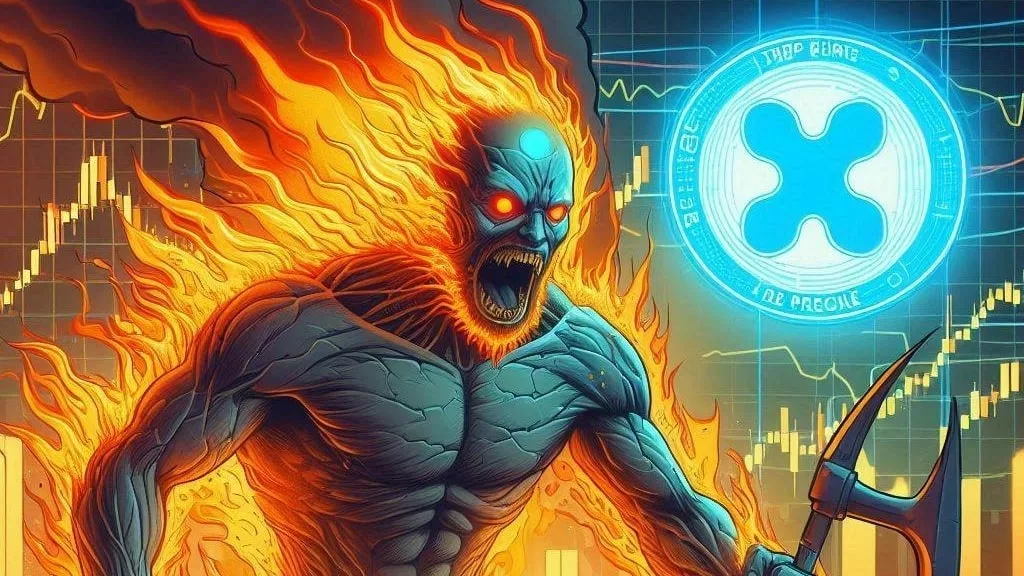
The cryptocurrency market has been active in recent days, particularly following the release of the latest U.S. inflation report, which marked the first decline in consumer prices in four years. This development has piqued interest in high-risk assets like Bitcoin, but the price movements tell a more complicated story.
Understanding the Inflation Report
The inflation report, recently made public, indicated a decrease in consumer prices. This unexpected outcome raised expectations about potential shifts in the Federal Reserve’s monetary policy. Many market participants viewed this news as a signal for possible easing, which historically has been favorable for Bitcoin and other cryptocurrencies.
Despite the positive sentiment surrounding the inflation report, Bitcoin’s price faced challenges. The cryptocurrency attempted to break through a critical resistance level around $59,600 but ultimately fell back below the $57,000 mark, settling around $57,260. This inability to maintain upward momentum raises questions about Bitcoin’s short-term prospects, as previous rejections at resistance levels often precede further declines.
Analysts have pointed out that similar patterns have occurred in the past, potentially indicating a period of weakness ahead for Bitcoin. As the market navigates these complexities, the uncertainty is palpable.
Positive Indicators Amid Challenges
While the recent price movements might seem discouraging, several encouraging signs suggest that Bitcoin could still find a path forward. The daily MACD (Moving Average Convergence Divergence) histogram shows a bullish momentum crossover, indicating that there might be potential for recovery in the days to come. Additionally, the reduced sales pressure from Germany’s Saxony region could help stabilize the market.
Several key elements could bolster Bitcoin’s performance:
Navigating the Current Market Landscape
As investors assess the current situation, many are contemplating how best to navigate this environment. While there are reasons for optimism, caution is still warranted. The ability of the market to handle potential selling pressure from Mt. Gox and other factors will be critical in determining Bitcoin’s near-term trajectory.
With Bitcoin currently trading at around $57,260, potential investors should weigh both the risks and rewards before making decisions. For those considering entry into the market or looking to expand their holdings, a thoughtful approach is essential. Diversifying across various asset classes may help mitigate some risks associated with Bitcoin’s volatility.
The future of Bitcoin remains closely linked to global economic conditions. While the U.S. inflation report has injected some optimism into the market, ongoing volatility is likely to continue. Investors must remain alert to how regulatory developments, economic indicators, and overall market sentiment interact and influence Bitcoin’s future.
Long-Term Considerations for Bitcoin Investors
Investors looking at the long-term potential of Bitcoin should keep several considerations in mind:
The regulatory environment for cryptocurrencies is continually changing. Clear and supportive regulations could encourage broader participation in the market, leading to increased demand for Bitcoin and other digital assets. Conversely, unfavorable regulations could stifle growth and reduce investor confidence.
Advancements in blockchain technology and improvements in transaction efficiency could enhance the attractiveness of Bitcoin as an investment. As the cryptocurrency ecosystem matures, these technological developments could play a significant role in shaping investor sentiment.
Institutional investors are increasingly integrating Bitcoin into their portfolios, often viewing it as a hedge against inflation. Their involvement provides a degree of stability and can help legitimize Bitcoin as a long-term investment. Continued participation from institutional investors could bolster confidence in the cryptocurrency market.
Investor sentiment plays a crucial role in determining Bitcoin’s price movements. As more individuals become aware of and educated about cryptocurrencies, the overall market could see increased participation. A positive shift in sentiment could lead to greater inflows into Bitcoin and other digital assets.
Conclusion
The recent U.S. inflation report has significantly influenced market sentiment regarding Bitcoin, creating a mix of optimism and uncertainty. While the immediate price action has been challenging, several underlying factors suggest potential support for Bitcoin moving forward.
As investors continue to monitor developments related to Federal Reserve policies, repayments from FTX, and the distribution of assets from Mt. Gox creditors, the cryptocurrency landscape remains dynamic. Those interested in participating in this market should stay informed and be prepared to adapt their strategies as new information emerges.
Bitcoin’s journey is characterized by volatility, but with careful analysis and a strategic approach, investors can identify opportunities within the evolving landscape. While challenges persist, the long-term potential of Bitcoin continues to attract attention, highlighting the importance of remaining engaged in this rapidly changing market.


Get the latest Crypto & Blockchain News in your inbox.